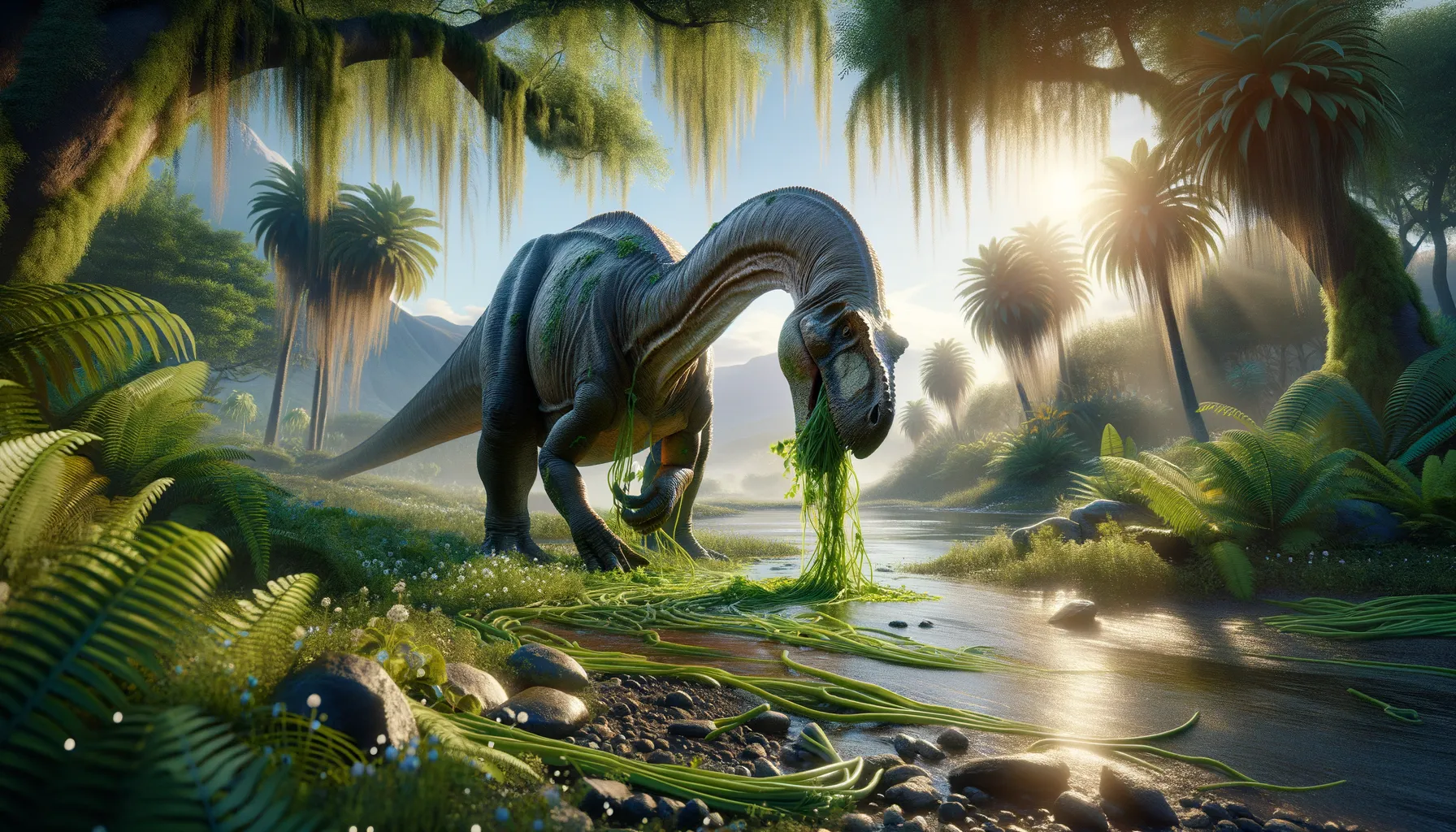
Adamantisaurus
Majestic giant of the Cretaceous era.
Period
Cretaceous
Length
About 15 meters long.
Height
Up to 4.5 meters tall.
Weight
Nearly 30 tons.
Adamantisaurus, a large sauropod, roamed the Earth during the Late Cretaceous period. Known for its massive size, it was a herbivore that fed on vegetation available in its environment. Fossils discovered in Brazil have provided insights into its physical characteristics and lifestyle. Its long neck and robust body are distinctive features, adding to the understanding of sauropod diversity and evolution.
Diet
As a herbivore, Adamantisaurus fed on a variety of vegetation, including ferns, cycads, and conifers. Its long neck allowed it to reach high branches and obtain food inaccessible to smaller dinosaurs.
Hunting
Not a hunter, being strictly herbivorous. It relied on its size for protection and consumed large quantities of plant material to sustain its massive frame.
Environmental challenges
Adamantisaurus faced challenges such as climate changes and vegetation shifts during the Cretaceous period. Competition for food with other large herbivores might have been significant. Predation from large carnivores was also a concern, though its size offered some defense. Seasonal variations likely influenced food availability and migratory patterns.
Speed
Slow-moving due to its massive size.
Lifespan
Estimated around 70 to 80 years.
First discovery
Discovered in Brazil in 1959.
Fun Facts
- Adamantisaurus was a giant dinosaur that lived during the Late Cretaceous period, around 70 million years ago.
- Its name means 'Adamant lizard,' named after the Adamantina Formation in Brazil where its fossils were found.
- Adamantisaurus was a titanosaur, which means it belonged to a group of long-necked, plant-eating dinosaurs.
- Despite its large size, very few fossil remains have been found, making it somewhat of a mystery to scientists.
- Based on related dinosaurs, Adamantisaurus is estimated to have been around 15 to 20 meters long.
- It walked on all fours and had a relatively small head compared to the rest of its huge body.
- Adamantisaurus is known mainly from its unique tail vertebrae, which helps identify it among other titanosaurs.
Growth and Development
Adamantisaurus likely experienced rapid growth rates in its early years, as seen in other sauropods. It required a substantial amount of food to fuel its development. Once it reached adulthood, its growth rate would have slowed. Adaptations for efficient digestion helped support its nutritional needs.
Habitat
Inhabited floodplain environments with lush vegetation. Such regions provided ample food resources and water. It likely moved in herds to different areas to access varied plant life. Seasonal migrations might have been part of its survival strategy.
Interaction with other species
Mainly interacted with other herbivorous dinosaurs, possibly competing for food resources. Its massive size helped deter predators, but young or sick individuals were vulnerable. It might have coexisted with smaller species that fed on different plant levels.
Natural lifespan
Had a natural lifespan of about 70 to 80 years.
Reproduction
Laid eggs in nests which were likely cared for in groups. Mating and reproduction occurred seasonally, likely timed with environmental conditions. Its young were smaller versions that grew rapidly post-hatching.
Social behaviour
Exhibited social behavior, potentially living in herds for protection and communal care of young. Herd movement might have had a structured hierarchy. Group living provided advantages in resource location and safety.
Fossil locations
Fossils primarily found in the Bauru Basin in Brazil. Discoveries provide important data on South American dinosaur fauna. The specific locations help piece together its movement patterns and habitat preferences.
